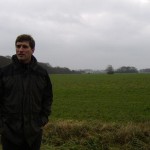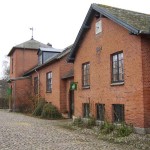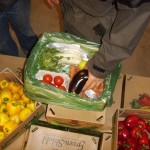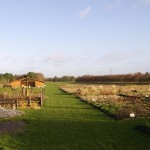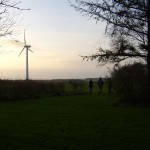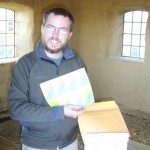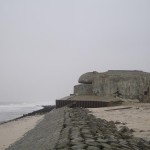Sounds a bit like The Middle Ages and knights and all that, and really that´s not too far off…
Thursday morning, November 30, we left for Barritskov, a manor house also on the East Coast of Jutland with 600+ hectares of Biodynamic forage crops and vegetables, and a sizable herd of beef cattle. Barritskov is also the home base of Aarstiderne (Danish for the four seasons), a “box scheme” that imports organic foods from all over the world and delivers any of nine different produce boxes, as well as a variety of specialty boxes (meat, dairy, fish, wine, etc.) to the doors of over 30,000 households in Denmark and now Sweden.
We took a tour with Chris Russel, the long-time renaissance man of the business and an American that has lived and worked in Denmark almost twenty years. He arranged for us to stay in the “gardener’s house,´´ a two-hundred year-old four bedroom home with a thatched roof, that is sometimes used by the president of the company but is in the process of being converted into a guest quarters. We were the first guests to stay here and felt quite lucky to be treated so well.
We met with Chris again on Friday, and had a good conversation about our project and the project there at Barritskov. Chris even videoed an interview of us for the company´s VLOG!
We gave Chris seeds (that he promised to increase) for their experimental garden, and he gave us access to boxes and boxes of Seeds of Change seeds from a 2002 trial garden they did for SOC. We were quite delighted for this gift, which included a few varieties that Seeds of Change doesn’t offer any more and we are excited to bring back. Most of the seeds are not on the EU Common Catalogue, so we took some seeds that we thought people might be interested in further down the line.
Barritskov was a wonderful place and while we were there we had the opportunity to explore the forests and coastline, and also walk to the town nearby. It was a great snapshot of the Danish countryside, and a much better seed contact than we had imagined.
